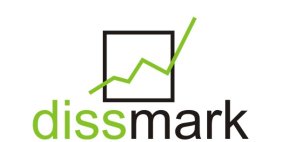|
Useful Tips for successful Dissemination & Marketing of Educational Projects and Products given by DissMark II Conference participants:
1. Dissemination Channels & Activities:
- Ministries of Education and Culture
- Government Agencies
- Local Authorities and Municipality Educational Experts
- National Agencies
- Professional Associations (e.g. Teachers’ Associations)
- Hobby Clubs (e.g. swimming clubs, pet owners clubs)
- Press (e.g. press releases)
- Presentations at Seminars & Conferences
- Presentations for Teachers and Students at Schools
- Presentations at Public Events (e.g. European Day celebrations, European Label Award Ceremony)
- Round-Table Discussions (Forums)
- Discussion Groups / Working Groups that include representatives of different projects (e.g. to share among themselves resources and examples of dissemination activities and the results of their implementation)
- Printed Materials (e.g. booklets, brochures, newsletters, posters, flyers, bookmarks, stickers)
- Newspaper Articles & Articles in (specialist) Journals
- Publishers & Materials Writers
- Employers
- Web: web 2.0 tools (e.g. blogs, wikis), e-mails, mailing lists, newsletters, (project) websites
- Networking / twinning among different projects (e.g. use of already existing project platforms to disseminate new projects)
- Participants’ Organizations (e.g. universities, language centres)
- Managers and Directors of Participants’ Institutions (e.g. seeking support for continuation of finished projects for expanding the application and for further dissemination and valorisation of language products)
- Personal Contacts (e.g. colleagues, professional networks, contacts from former projects)
- DVD-s, CD-ROMs
- TV, Radio
- Buses, Trolleybuses, Trams, Trains, Airplanes
- Hotels, Tourism Offices
- Traditional & On-line Bookshops
- Libraries
2. Suggestions for future Conferences on Dissemination and Valorization of Project Results:
Set up the tradition of conferences and project fairs for dissemination and exploitation of project results.
- Longer conferences to enable participants get to know all the exhibited projects (2 days were considered too short a time for both substantial plenary input and networking and discussion activities);
- During the conference allocate long time slots for discussions and work in small groups; allow long coffee breaks to facilitate networking;
- Invite / attract as many publishing houses, decision-makers, people in charge of curriculum implementation and development from different countries as possible;
- Invite / attract as many language teaching specialists (not directly involved in projects) as possible;
- Greater involvement of NAs;
- Educational community could benefit from professionals coming from the 'outside', e.g. marketing & dissemination training delivered by business people.
|

![]() Feedback
Feedback
